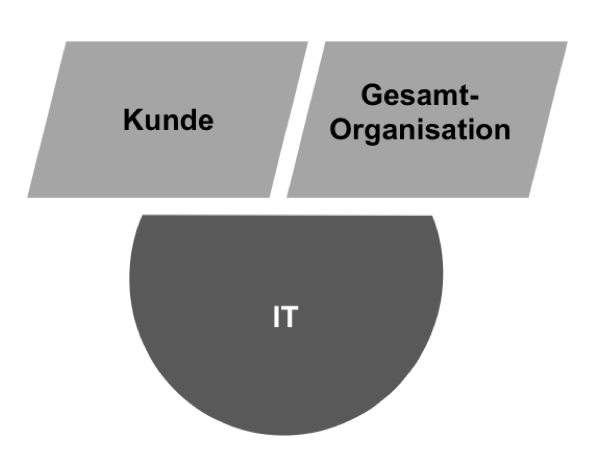IT organization, also called IT management, is the abbreviation for information technology organization and describes the use and management of this. IT organization is often only associated with the hardware and software used by companies, although, strictly speaking, it also includes users, i.e. staff or subordinate organizational departments. Since these not only use information technology, but also create and optimize it, they must also be taken into account in the IT organization. Often the use of information technology pursues several goals, which have to be reconciled with the help of the organization of good IT management.
composition

If you take a closer look at the organization of information technology, you can divide it into the following main groups, which are related to IT in different ways. Your influence on and your requirements for information technology result in different areas of responsibility, the fulfillment of which is the main task of every IT organization and thus justifies the splitting of the categories.
Areas of responsibility
Figure 1 describes the relationship between IT itself on the one hand and the overall organization and its customers on the other. In addition, external partners can also play a role here, who can also influence the IT organization. Between every type of relationship between the company and third parties there is the striving for an optimal negotiation process and an intact value chain. This endeavor is usually fulfilled on the basis of efficient IT management, the success of which becomes visible when all sub-areas of the IT organization, despite their interactions, are harmonized and / or prioritized with one another. In order to make this possible, it is important to know the functions and tasks of the individual categories, the relationship between which is shown in Figure 2.

IT controlling represents the focus of the individual core areas and is used to analyze company-relevant key figures from which future changes and processes can then be focused and planned with the help of the IT strategy. These two categories ultimately result in the positions enabling and alignment, which are intended to show that the IT organization does not have a specific goal of its own, but opens up various business opportunities for entrepreneurial management through the right application. Embedded in it are four specific IT functions that are directly related to the IT users. The IT service management serves to serve the wishes and requirements of the customer in the best possible way.
The opposite is the IT resource management, which is responsible for business issues. With the help of this category, relevant resources such as hardware or software, the workforce and information processing can be controlled.
IT governance, risk and compliance management deals with risk factors by trying to identify and counteract them at an early stage, as well as compliance with legal aspects.
Because IT portfolio management can only be used and support the company in evaluating performance ideas if compliance with the law is guaranteed.
All four areas are connected with each other and influence each other, so that an equally balanced strategic focus on all areas is extremely important for the success of an IT organization. This is expressed by the term Enterprise Architecture Management. The whole concept is finally framed by the cybersecurity category, the function of which is to meet security and data protection requirements.
Instruments
In order to implement IT in their own company and to continuously optimize it later, many companies use various software solutions. Well-known programs for IT administration include ARIS and ALFABET from FIRMA Software AG, ADOit from BOC or Mega Suite from the manufacturer of the same name, as well as Troux Technologie’s Troux Enterprise Suite and rimacon omniSuite from rimacon.
Implementation in practice
When implementing their IT organization, companies often use so-called best practice examples. These are particularly characterized by their adaptability and flexible transmission method. Many companies therefore take on the experience of other companies when dealing with IT management and optimize it for their own purposes. This has the advantage that the error rate is often significantly lower, the implementation time is significantly reduced and employees can be trained more quickly.
Well-known best practice examples for IT organization are ITIL (Information Technology Infrastructure Library) and COBIT (Control Objectives for IT), which are made publicly available at regular intervals as sample versions by central organizations and are constantly optimized in line with the times.
I OFFER GUEST ARTICLES AND INFLUENCER MARKETING!
You have your own, interesting thoughts around the theme world of the blog and would like to share them in a guest article on my blog? – But gladly! You can thereby address customers and professionals. I also offer Influencer Marketing to support your brand! But for all this you will need these 2 tools so I am referring you.
- Paraphrase Tool
- Plagiarism Checker
These tools will work to detect and remove your Plagarism.
Gendernote: I have used the masculine form for ease of reading. Therefore, unless an explicit distinction is made, it always refers to women, diverse as well as men, and people of all origins and nations. Read more
Spelling: I translated my German Blog to English – so you can also read my Recommendations. Please be sorry if this English is not so good.
Verwendete Quellen anzeigen [fotolia]



